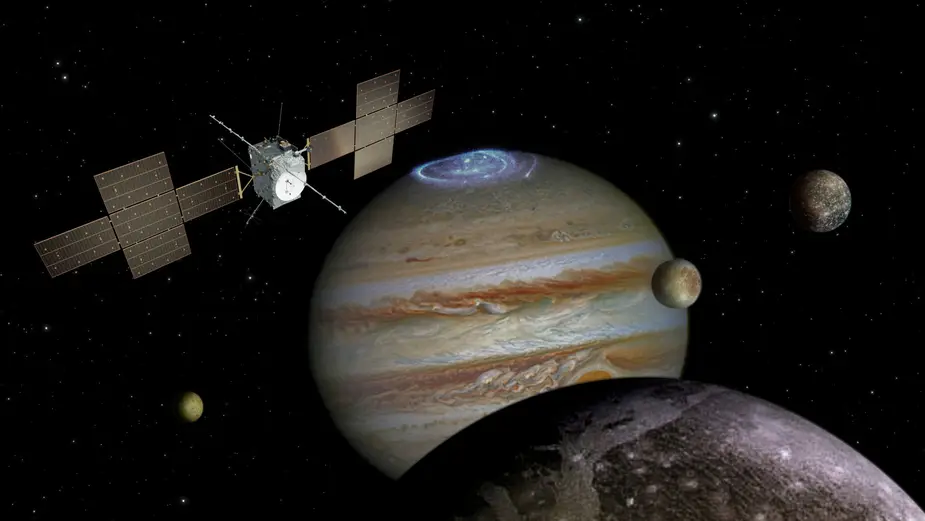Jupiter Icy Moons Explorer (JUICE) spacecraft with DLR instruments on its way to Europe’s spaceport in Kourou
ESA mission spacecraft launches to Jupiter in April to study the planet and its icy moons, especially Ganymede
"Trois, deux, un – et décollage!" This is how the last three seconds will be counted down in the control centre in Kourou, French Guiana, this April before one of the last Ariane 5 launch vehicles lifts off from Europe's Spaceport. The target of the European Space Agency's (ESA) largest planetary mission to date is Jupiter and its large icy moons Ganymede, Callisto and Europa. The Jupiter Icy Moons Explorer (JUICE) will study them up close from 2031 onwards. Under their icy crust, the moons could likely harbour oceans in which life could possibly exist. The Institute of Planetary Research at the German Aerospace Center (Deutsches Zentrum für Luft- und Raumfahrt; DLR) played a major role in the construction of two of the ten scientific instruments. The German Space Agency at DLR manages the German ESA contributions to JUICE on behalf of the German government and will provide approximately 100 million euros of funding across seven of the spacecraft’s instruments over the life of the mission.
JUICE will reach Jupiter in July 2031 and complete a total of 35 flybys of the moons by November 2035. In September 2034, the spacecraft will be steered into an elliptical, later circular, orbit around Ganymede. JUICE will be the first mission to orbit the moon of another planet. By the time the mission ends in September 2035, JUICE will have orbited Ganymede approximately 1250 times. Should fuel still be available, further orbits will take place at an altitude of just 200 kilometres, enabling measurements of a quality that would set the standard for decades to come. At the end of the mission, the spacecraft will be deliberately steered to crash into the surface of Ganymede and be completely destroyed in the collision with the rock-hard ice.
Source: Press release DLR, 20 January 2023
